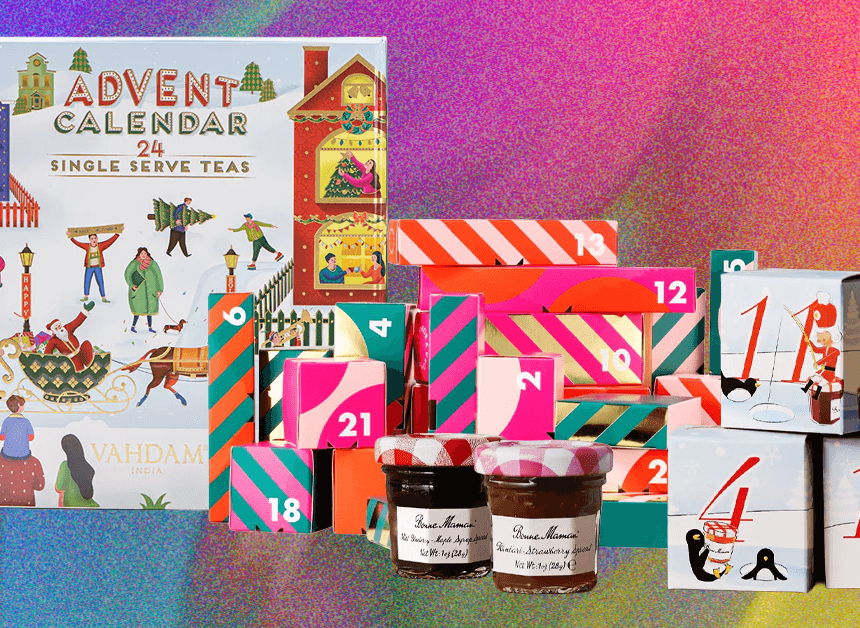Pumpkin pie, caramel apples, and candy corn usually signal the start of spooky season, but, this month, author and archivist Rosie Grant encourages cooking enthusiasts to ring in October differently. Her cookbook of recipes sourced from gravestones makes a macabre addition to any Halloween lover’s kitchen, though Grant wants everyone talking about death and food year round.
To Die For: A Cookbook of Gravestone Recipes, out October 7, featuring 40 recipes found on tombstones around the country and beyond, including Sharon Lawrence’s snickerdoodles, Deb Nelson’s Red Lantern cheese dip and Dr. Marty Woolf’s ranch. Though most of the recipe writers are no longer of this world, their signature dishes are carved in stone to keep the flavors — and their memories — alive.
The cookbook is the end result of a yearslong research project documented on Grant’s TikTok account, @ghostlyarchive, wherein she traveled to every corner of the country to pay witness to headstone recipes and connect with the families of the deceased. Over 200,000 followers have watched Grant honor the dearly departed by cooking their recipes and sharing short videos about their lives.
“I wish I had known these people. They sound awesome,” Grant, 36, said in a phone interview. “Their memory is so alive.”
Grant didn’t set out to write a recipe book. Her journey started very differently: with a digital archives internship at the Congressional Cemetery in Washington, D.C. At the beginning of the COVID pandemic, Grant was pursuing a master’s degree in library and information science at the University of Maryland. As part of the program, she found an internship in 2021, which brought her to the historic cemetery nestled in the nation’s capital. Grant grew up exploring graveyards in Alexandria, Virginia, where her parents worked as ghost tour guides, so she was eager to learn more about the death industry. “I was very jazzed about it,” she said. Grant initially created a TikTok account to share what it’s like to intern at a cemetery, posting her first video in June 2021.
Like the rest of the world, she was largely homebound as the virus spread. Grant — a self-described home cook — took the opportunity to experiment with new recipes and flavors during the pandemic lockdown. She was also coping with the deaths of her grandmothers, Catherine and Rosemary. Grant found herself reflecting on the dishes they made to feed their kin: Catherine’s yellow box cake, Rosemary’s paella and maple walnut cake.
It wasn’t long before Grant came across her first gravestone recipe, belonging to Naomi Odessa Miller-Dawson in Brooklyn, New York. Her spritz cookies are simple: butter or margarine, sugar, vanilla, egg, flour, baking powder and salt. After posting over 100 videos about different types of memorials and historic tidbits, Grant shared Miller-Dawson’s recipe online in January 2022, with the vow that she would start making recipes from headstones.
Grant assumed that would be a rarity. “I really didn’t think there were more than two, more than three,” she said. “And it just kind of kept growing and growing.” She created a mini archive to identify the deceased and track the locations of their final resting places. It’s since expanded to include downloaded obituaries and oral histories with living relatives.
As she circulated more recipes, social media users commented about the meals they make when they miss the dearly departed. “It was just so many very deep, personal stories that people were comfortable with sharing, and I just thought it was so beautiful,” Grant said. Eventually, strangers reached out to her to offer up their loved ones’ recipes. Grant notes that she’s never stumbled across a memorial recipe organically. They’re either sent to her, published online, or included in community archives.
In the early days, Grant paid her respects at the tombs if she happened to be in that particular state for a wedding or a holiday. She’d rent a car and drive to the nearby resting places on her list. With each recipe, she also interviewed relatives of the deceased. Often, Grant would turn to the website Find a Grave and use obituaries to connect with family members. She estimates that most of the people featured in her cookbook passed away within the last few decades, so finding their flesh and blood was a doable task. She called and sent messages on various social media platforms to introduce herself and explain the project. She asked for permission to include their late relative and learn more about their lives.
“Then, of course, later on, it turned into, ‘Oh, I think I have enough recipes that this might turn into a book,’” Grant said.
Now, she’s traveled to dozens of states in pursuit of gravestone recipes. Grant has visited all of the North American gravestones in her cookbook. Last year, she traveled every weekend, using vacation time to see the markers with her own eyes before the book draft was due in early January. The furthest destination: Nome, Alaska. After three flights over a 24-hour period, Grant finally reached Bonnie June Rainey Johnson’s headstone. She called it “one of the most rewarding experiences I’ve ever had in the project.” There, she spent days with Johnson’s family, hearing the local history and taking a cemetery tour.
Grant noted that three of the women in her book — Peggy Neal, Cindy Clark-Newby and Christine Hammill — are still alive; they’re just proactive in their end-of-life planning. So she was able to speak with each of them directly. The project has inspired Grant to embrace the death-positive movement. She admits that she used to shy away from thinking about mortality too deeply, which is a sentiment shared by many.
Still, “there’s a lot of other cultures that are just more comfortable with food and death,” she said, pointing to Latin America’s Día de los Muertos, or Day of the Dead, and Asia’s Hungry Ghost Festival. But Americans used to break bread with the dead, too. Some cemeteries even featured tabletop tombstones for picnicking. “You would literally eat on top of the gravestone,” Grant said.
She encourages others to consider how they want to be remembered, and Halloween can be the ideal season for those conversations. “It’s a time that people are more comfortable engaging with these topics,” Grant said. She and her partner are doing just that. They plan to purchase a plot in the Congressional Cemetery, and Grant is already debating which recipe to carve on her gravestone. At present, she’s partial to clam linguine.
Moving forward, Grant wants to learn more about cooking techniques. “My whole bookshelf is either death books or food books,” she said. The Los Angeles resident is also balancing her online presence with a job at the UCLA Barbra Streisand Center, which focuses on women’s studies.
Families continue to reach out to her with more gravestone recipes, and she’s building a new list of memorials to visit, including what will be her first European marker in the Netherlands. After years of pondering life, love, baking and the Great Beyond, Grant has found a common thread among the dearly departed: food as a love language.
“The bottom line is, they all really loved food,” Grant said, “and they use cooking to connect with their loved ones.”
To Die For: A Cookbook of Gravestone Recipes is available now at Amazon and other retailers.






